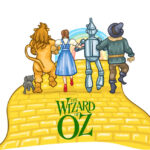Dance, a universal form of human expression, takes on profound significance within Native American cultures, serving as a vibrant reflection of social organization and deeply rooted traditions. Visitors observing these dances might initially miss the intricate patterns of social roles embedded within them. However, a closer look reveals how these performances distinctly portray societal structures, gender dynamics, and community relationships. Native American Dances are not merely aesthetic displays; they are powerful narratives embodying the very fabric of indigenous life.
Gender and Moiety Systems in Iroquois Dance
In many Native American traditions, dance roles are clearly defined by gender. Some dances begin with only men or women participating, with the other gender joining subsequently. In other instances, specific dances are exclusively performed by men or women. The Iroquois, in particular, showcase complex social organization within their longhouse dances, particularly through the moiety system. Moieties, complementary tribal divisions based on kinship or ceremonial function, deeply influence dance participation.
Iroquois dance traditions meticulously dictate the extent and nature of male and female involvement. Dancers may perform simultaneously yet separately, in pairs, or in various group combinations. Interestingly, the dance and song leader and their helper must belong to different moieties, regardless of whether they lead from the dance floor or the sidelines. When women join a dance line, either alone or with others, they are expected to pair with a member of the opposite moiety, considered a “cousin.” This intricate system underscores the importance of balance and interconnectedness within Iroquois social structure, vividly expressed through their native american dances.
Dance Societies and Ritualistic Performances
Beyond moieties, Iroquois society, like many other Native American groups, incorporates public or secret societies that further shape dance roles. Membership in these societies is often lifelong, sometimes initiated during times of illness or hardship. These societies are responsible for performing specific ritualistic dances. Examples include the Iroquois False Face Society’s curative rites, the ohgiwe female mortuary dances, and dances performed by the Bear and Buffalo medicine societies, which integrate both genders.
Across North America, religious dance societies were also structured around age grades, as seen in the warrior societies of the Northern Plains tribes. These societies and their dances served to maintain social order, transmit cultural knowledge, and address community needs, highlighting the functional role of native american dances in indigenous life.
The Concheros: Intertribal Dance Hierarchy
The influence of dance societies extended beyond local communities and even tribal boundaries, exemplified by the complex organization of Mexico’s concheros. This intertribal dance group features a detailed hierarchy, ranging from a capitán general de la conquista de Tenochtitlán to local commanders and military ranks, each with specific duties relating to mythological figures and spiritual entities. The concheros assert their connection to Aztec heritage, a claim supported by some evidence despite the incorporation of Spanish elements, showcasing the enduring legacy and adaptation of native american dances.
Aztec Dance: A Reflection of Theocratic Governance
In contrast to the Iroquois’ more democratic traditions, the dances of the earlier Aztec civilization vividly mirrored their theocratic government and rigid social hierarchy. Aztec ceremonial roles in dance were highly prescribed, reflecting a social structure composed of priests, nobles and warriors, commoners, serfs, and slaves. The priestly and noble-warrior classes actively participated in the numerous festivals of the Aztec calendar. Priests were responsible for training noble youths in religious duties, including dancing and singing. Warrior youths engaged in ceremonial combat, and elite warrior orders like the eagle and ocelot warriors symbolically fought captive slaves during specific festivals.
Commoners and serfs primarily formed the audience, though commoners sometimes joined in serpent dances with the nobility. Serfs, on the other hand, were occasionally subjected to ritualistic attacks and routs by priests. Gender and age roles were also present, but slaves, obtained through sacred warfare or trade, occupied a passive role as sacrificial victims in these elaborate ceremonies. These Aztec native american dances were powerful enactments of their social and religious beliefs.
Dance as a Stage for Opposites and Sacrifice
Aztec ritualistic dances often dramatically juxtaposed social opposites: nobles and commoners, old and young, male and female. Warrior orders symbolized the cosmic clash of sky and light against earth and darkness, enacting the roles of sacrificer and victim against poorly armed captives. However, it was the priests and the passive slaves who together performed the most crucial act of the Aztec dance-drama: human sacrifice. This culminating act closed the circle of social gradations, uniting the highest and lowest ranks in the most significant ritual, highlighting the profound and complex role of native american dances in Aztec society.
Through diverse examples from the Iroquois to the Aztec, it becomes clear that native american dances are far more than just movement and rhythm. They are intricate expressions of social structure, cultural values, and historical narratives, offering valuable insights into the rich and complex societies from which they originate.

